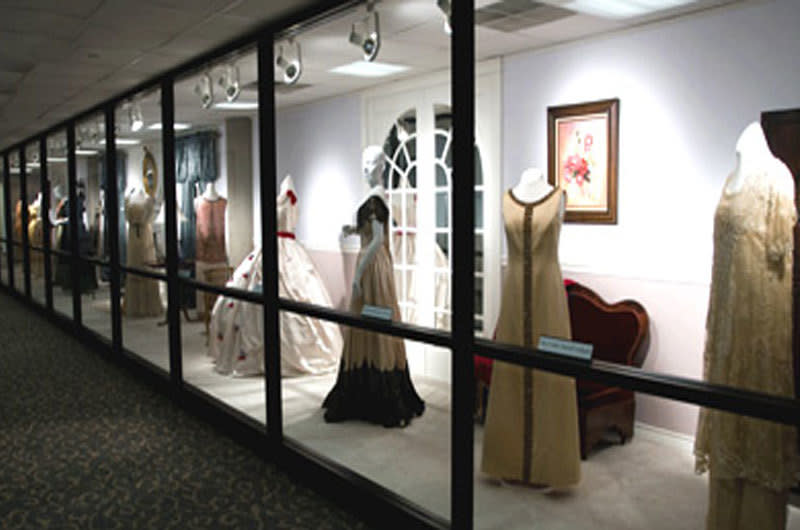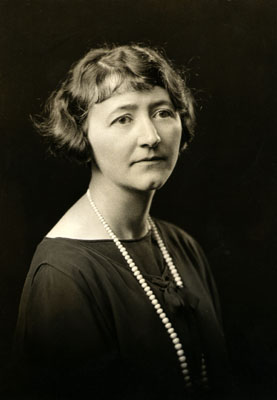Blog post by Dr. Denise N. Green ’07
Believe it or not, my career was sparked by the First Ladies of Texas. I attended high school in a Dallas suburb and during my senior year I went on a field trip to the Texas First Ladies Historic Costume Collection. While I had visited every possible art museum in the Dallas area, I had never seen (nor even imagined!) museums that could exist for the display of fashion. While some of the aesthetics of the First Ladies of Texas did not exactly align with my personal taste, I was hooked by the display and the histories that could be conveyed through clothing and textiles.
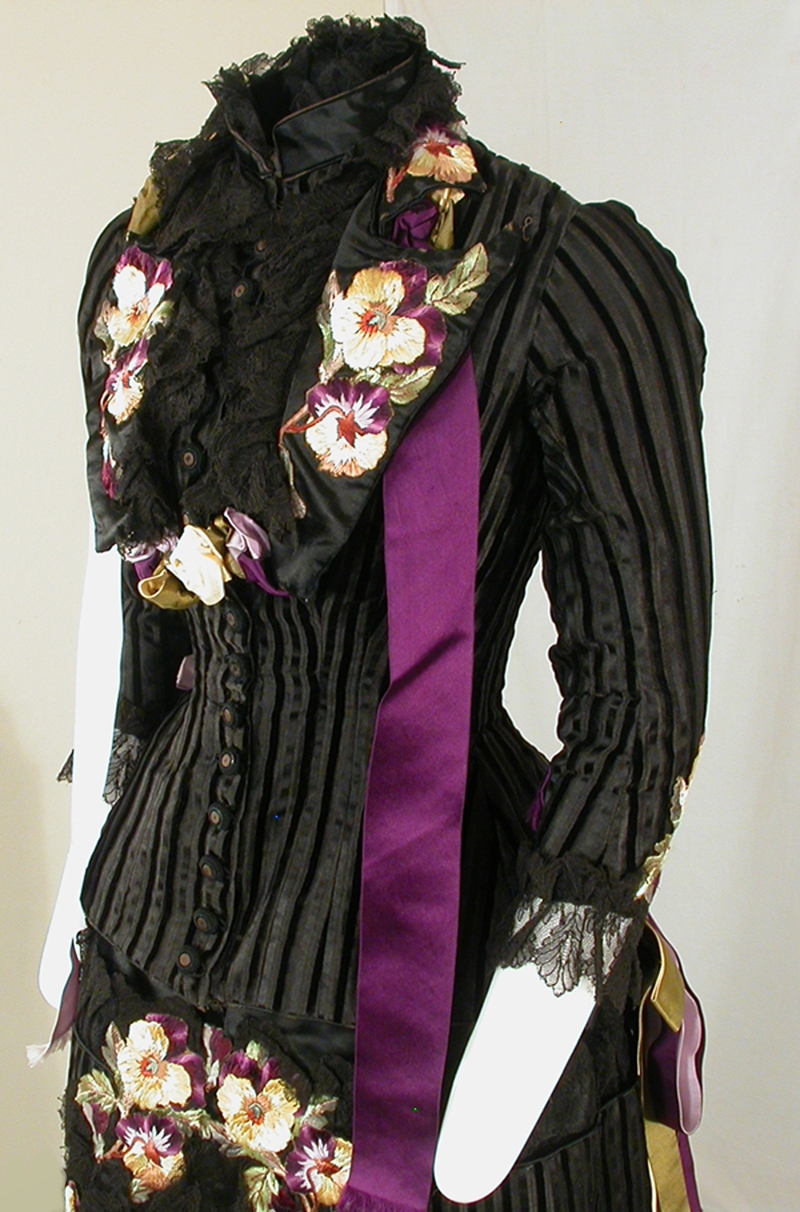
Gown worn by Olivia “Livy” Langdon Clemens (Mrs. Samuel Clemens), ca. 1880. Silk gauze over satin and embroidered with silk thread. CCTC #36, gift of Dr. Ida Langdon (PhD ’12)
The following year I enrolled in the fashion design program in the College of Human Ecology at Cornell and took an introductory design course with Professor Charlotte Jirousek. She brought examples to class from Cornell’s Costume & Textile Collection and went back and forth between projected images from the slide carousel to actual artifacts. To be in close proximity to these exquisite garments and textiles was humbling. I remember being awestruck by an early 1880s dress with a bustle and embroidered purple pansy embellishments, which I later learned was worn by Olivia Langdon Clemens, the wife of Mark Twain. (A blog post about this piece is forthcoming from Susan Greene MA ’94.)
It took me a year to muster up the courage to ask for a work-study job in the collection. Back then it didn’t seem appropriate to ask such important questions over e-mail, so I went to see Professor Jirousek during her office hours. I can still remember her tiny 3rd floor office in MVR: books and slide carousels piled from ceiling to floor, mounds of Turkish textiles, and a desk with just enough room for a desktop computer and a lightbox to examine slides. There wasn’t a place for me to sit, so I stood waiting to speak. When I finally asked if she would consider me for a position as an undergraduate research assistant in the Cornell Costume & Textile Collection, she chuckled knowingly as if she had been waiting for me to show up at her door.

Shoes worn with the above gown and purchased by Mark Twain in Constantinople while traveling and writing The Innocents Abroad in the late 1860s. CCTC #1193, gift of Dr. Ida Langdon (PhD ’12)
For myself and the other undergrads who worked in the CCTC, the collection was a reprieve from the stress of prelims, pressures of the design studio, and the hustle and bustle of campus. It was a place full of possibility and adventure, where we could (re)discover unique histories and be inspired by designs from across the globe. The collection was simultaneously peaceful and thrilling: each garment told a story, was worn by a different individual with a unique life, and had distinctive aesthetic and design characteristics. Sometimes it was a challenge to make progress on our projects in the collection because each artifact offered so many interesting stories. When you have your very own library of fashion history it can be hard to leave for the day—there’s so much to learn, and so many garments: over 10,000 to be (somewhat) exact.
But where did all of these garments come from? How did it begin?
The collection was started in 1916 by Beulah Blackmore, Cornell’s first faculty member in the field of clothing and textiles. Like many other university clothing and textile collections, ours began as a collection of teaching specimens. Professor Blackmore accumulated examples of dress from different cultures, times, and places to illustrate her lectures on fashion history and world dress. In 1936 she cashed in her life insurance policy to fund a trip around the world during her sabbatical. The College of Home Economics provided her with $500 to purchase examples of native dress and textiles from different regions of the world so that upon return the costumes could go on semi-permanent display in the college. Blackmore began in Cuba, crossed the Panama Canal, and traveled throughout Asia (China, India, Burma, Indonesia, Korea, and Japan), across the Middle East, Northern Africa, the Mediterranean, and Eastern and Northern Europe. She returned with over twenty complete ensembles and many more accessories and flat textiles. At a time when few students traveled to other continents, Blackmore brought the world to her undergraduates to educate them about diverse cultural approaches to dress.
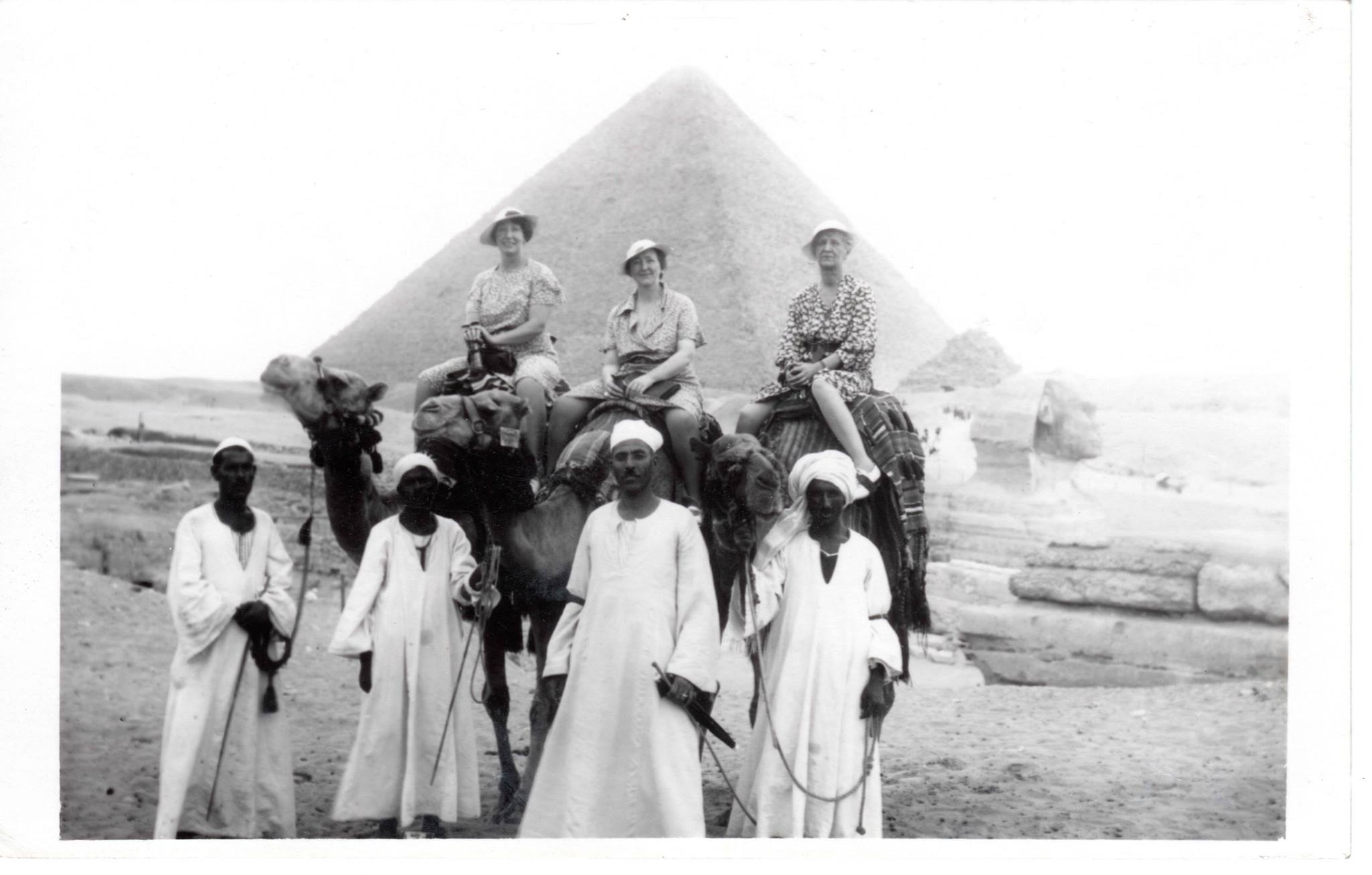
Professor Beulah Blackmore (center) with traveling companions Professor Marion Pfund and Sarah Bostwick in Cairo, Egypt in 1936.
After her return, Blackmore organized “A Costume Show for Peace,” an elaborate display of pieces she collected during her travels. She stated, “The Textiles and Clothing Department is attempting to give visitors and students an insight into the traditions and customs of other lands, believing that by so-doing the feeling for peace, throughout the world, will be increased.” Several years later, Blackmore wrote, “We are building a collection of costumes which will give, when completed, a picture of our social history as well as being a very beautiful collection […] As our collection grows we look forward to someday having a lovely room which can be devoted to displaying the costumes.”
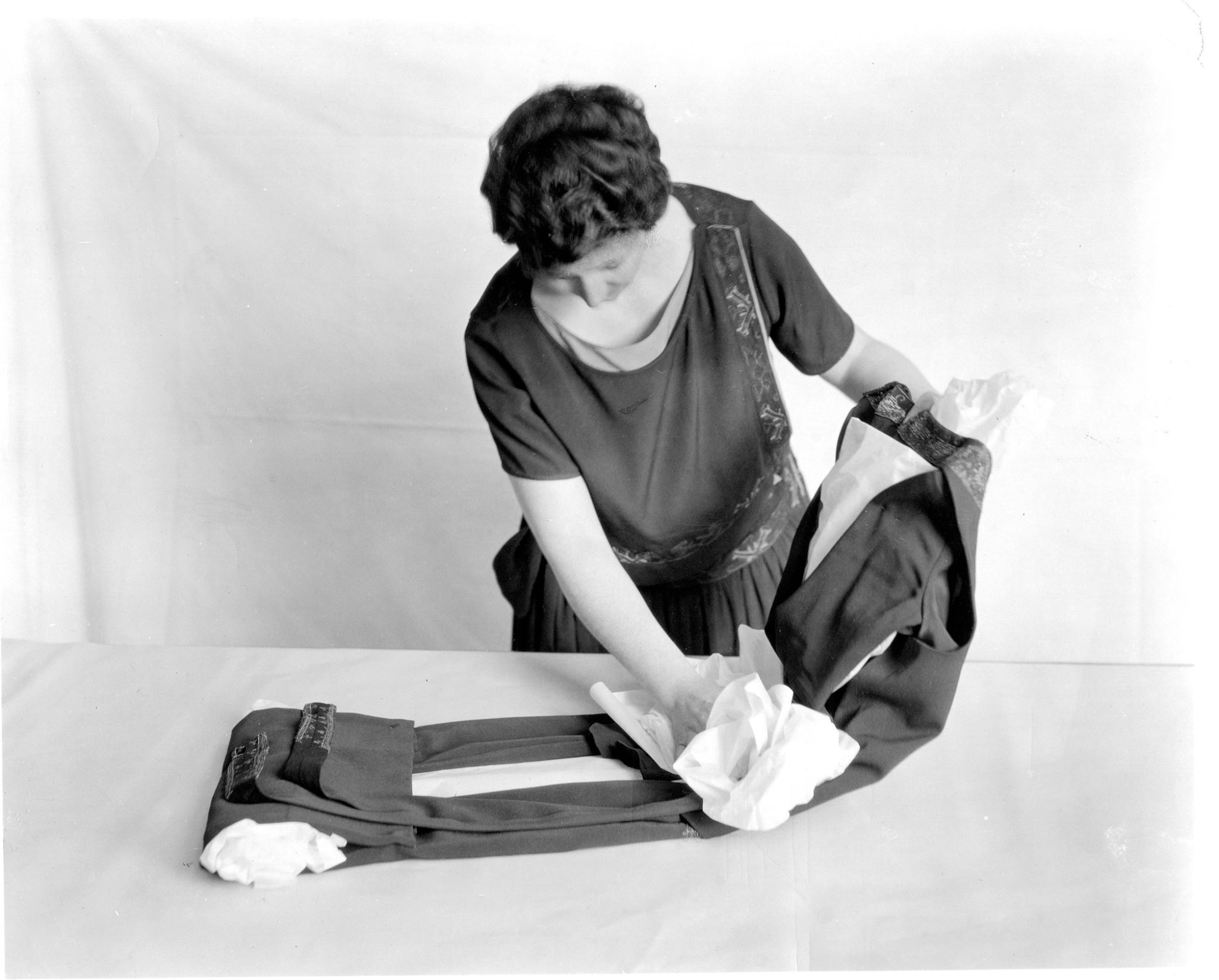
Professor Blackmore demonstrating proper garment storage techniques for an article in The Delineator in 1924.
Today, our display cases on the Terrace level of the Human Ecology Building enable us to share a small part of the collection with the public; however, the “lovely room” is still a dream. We currently store our items in a room in the Human Ecology Building which does not do our collection justice. It’s not adequate from a spatial efficiency perspective, nor from the perspective of our county fire marshal who required us to make changes in 2016. We’ve inventoried our collection and removed items that are duplicates, in poor condition, or have little provenance or design significance. Our long-term solution is the redesign of our space using high-density mobile storage units to maximize vertical storage while still adhering to fire code. In this redesign, we also plan to install environmental chambers for garments with special requirements (this includes furs, leathers, and technical apparel and textiles in our Functional Apparel Collection which was started by Professor Sue Watkins, an important pioneer in the field.)
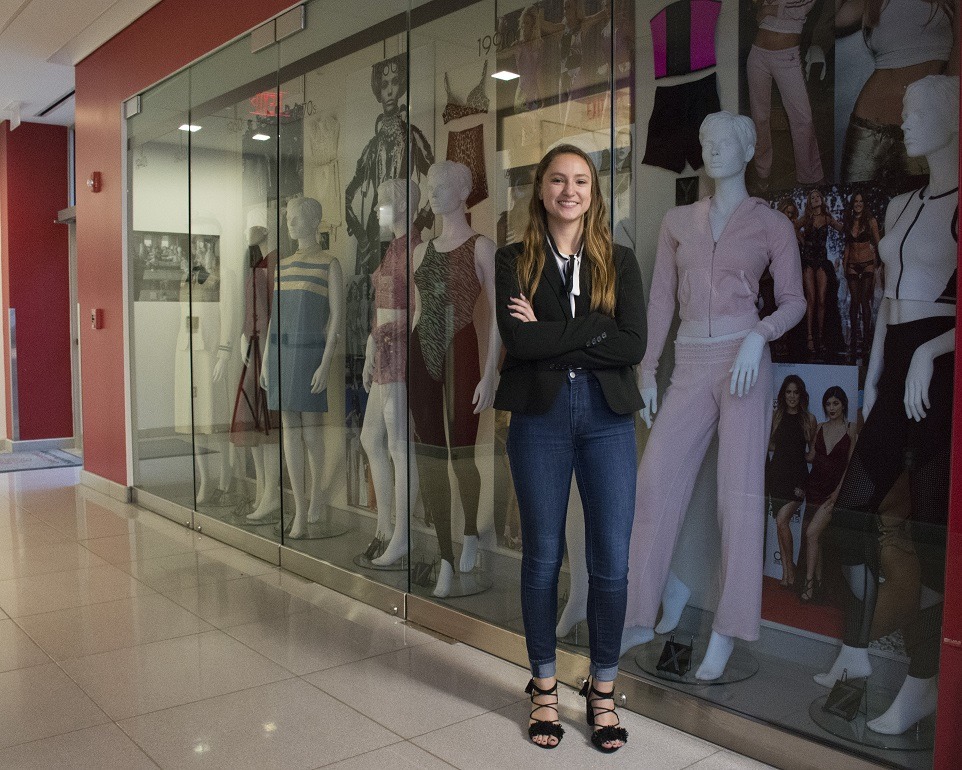
Rachel Doran ’19 with her exhibition, “Go Figure: The Fashion Silhouette and the Female Form,” located in the Human Ecology Display Cases where we mount our CCTC exhibitions.
Our long-term solution has a price tag—$450k. The College has committed $125k and alumna Rae Messer Reilly ’63 has made an enormously generous gift of $200k. We are now working on raising the remaining $125k with the help of a 1:1 challenge match provided by two Cornell alumni who see the collection as a “University treasure.”
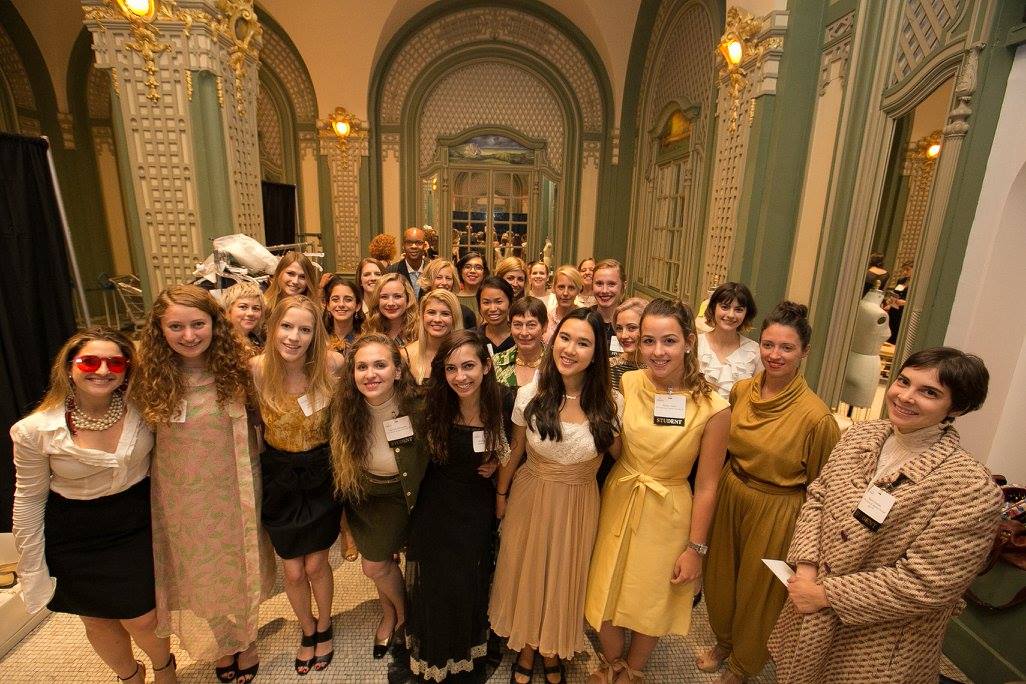
Cornell students and alumni participate as models in the CCTC’s “Fashion for a Cause” fundraiser fashion show at the Prince George Ballroom, September 2017.
Today, the Cornell Costume & Textile Collection connects to the world through our social media accounts on Facebook and Instagram, and serves the Ithaca, Cornell, and upstate New York communities through free public exhibitions (three each year) and special events. We are indeed committed to Beulah Blackmore’s vision.
Over the next few months, students, faculty and staff will be posting descriptions and photos of their favorite things in the Collection. My bet is that you too will be awestruck and engaged by the important histories we have to share. Please stay tuned by following this blog, as well as our Facebook and Instagram accounts! If you would like to make a gift to support our efforts, please click here.
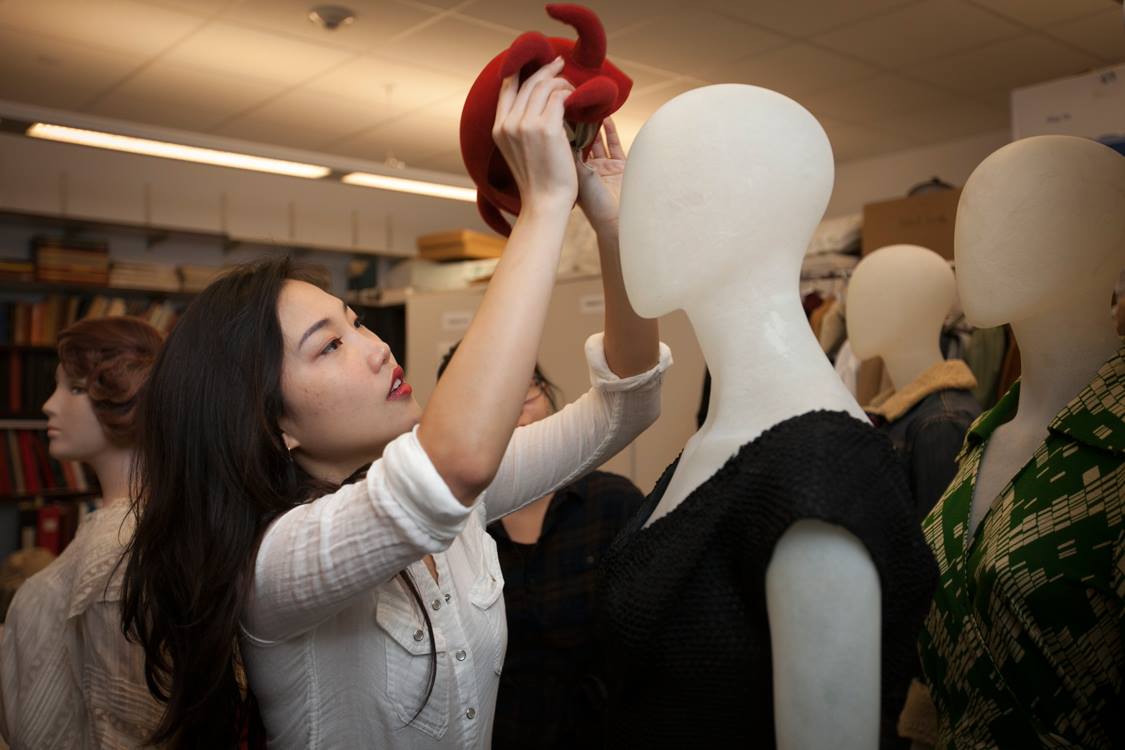
Rachel Jun ’17 dresses mannequins for the exhibition “150 Years of Cornell Student Fashion” in 2015.
 Denise Nicole Green began working in the Cornell Costume and Textile Collection in January 2005 and curated her first exhibit Street Fashion and Youth Subculture: An Ethnographic Costume Exhibition in November 2006. After graduating from Cornell in 2007 she began working on her Master’s degree at the University of California–Davis where she conducted ethnographic research at Burning Man, a festal occasion for costuming and radical self-expression. Professor Green’s research is chronicled in the documentary film Somewhere in Between and in the article “From Ephemeral to Everyday Costuming: Negotiations in Masculine Identities at the Burning Man Project,” published in Dress: Journal of the Costume Society of America. Dr. Green received a PhD in Socio-Cultural Anthropology from the University of British Columbia and for the past 9 years has worked with Nuu-chah-nulth First Nations to examine the important connections between ceremonial textiles, regalia, and traditional territories. Dr. Green returned to Cornell in July 2014 and serves as the Director of the Cornell Costume and Textile Collection and as a faculty member in the Department of Fiber Science and Apparel Design, the American Indian and Indigenous Studies Program, the Cornell Institute of Archaeology and Material Studies, and as a graduate field member in the Department of Anthropology. She has recently published a number of articles related to Cornell Costume & Textile Collection exhibitions and artifacts, including “The Best Dressed and Best Known Woman in America: Irene Castle and Silent Film Style,” “Cornell’s Sesquicentennial: An Exhibition of Campus Style,” “Fashion Cultures in a Small Town: An Analysis of Fashion- and Place-Making,” and “Nuu-chah-nulth First Nations’ Huulthin (Shawls): Historical and Contemporary Practices.”
Denise Nicole Green began working in the Cornell Costume and Textile Collection in January 2005 and curated her first exhibit Street Fashion and Youth Subculture: An Ethnographic Costume Exhibition in November 2006. After graduating from Cornell in 2007 she began working on her Master’s degree at the University of California–Davis where she conducted ethnographic research at Burning Man, a festal occasion for costuming and radical self-expression. Professor Green’s research is chronicled in the documentary film Somewhere in Between and in the article “From Ephemeral to Everyday Costuming: Negotiations in Masculine Identities at the Burning Man Project,” published in Dress: Journal of the Costume Society of America. Dr. Green received a PhD in Socio-Cultural Anthropology from the University of British Columbia and for the past 9 years has worked with Nuu-chah-nulth First Nations to examine the important connections between ceremonial textiles, regalia, and traditional territories. Dr. Green returned to Cornell in July 2014 and serves as the Director of the Cornell Costume and Textile Collection and as a faculty member in the Department of Fiber Science and Apparel Design, the American Indian and Indigenous Studies Program, the Cornell Institute of Archaeology and Material Studies, and as a graduate field member in the Department of Anthropology. She has recently published a number of articles related to Cornell Costume & Textile Collection exhibitions and artifacts, including “The Best Dressed and Best Known Woman in America: Irene Castle and Silent Film Style,” “Cornell’s Sesquicentennial: An Exhibition of Campus Style,” “Fashion Cultures in a Small Town: An Analysis of Fashion- and Place-Making,” and “Nuu-chah-nulth First Nations’ Huulthin (Shawls): Historical and Contemporary Practices.”

